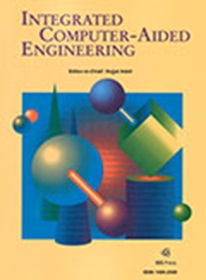Back-propagation of the Mahalanobis istance through a deep triplet learning model for person Re-Identification
IF 5.3
2区 计算机科学
Q1 COMPUTER SCIENCE, ARTIFICIAL INTELLIGENCE
引用次数: 7
Abstract
The automatization of the Re-Identification of an individual across different video-surveillance cameras poses a significant challenge due to the presence of a vast number of potential candidates with a similar appearance. This task requires the learning of discriminative features from person images and a distance metric to properly compare them and decide whether they belong to the same person or not. Nevertheless, the fact of acquiring images of the same person from different, distant and non-overlapping views produces changes in illumination, perspective, background, resolution and scale between the person’s representations, resulting in appearance variations that hamper his/her re-identification. This article focuses the feature learning on automatically finding discriminative descriptors able to reflect the dissimilarities mainly due to the changes in actual people appearance, independently from the variations introduced by the acquisition point. With that purpose, such variations have been implicitly embedded by the Mahalanobis distance. This article presents a learning algorithm to jointly model features and the Mahalanobis distance through a Deep Neural Re-Identification model. The Mahalanobis distance learning has been implemented as a novel neural layer, forming part of a Triplet Learning model that has been evaluated over PRID2011 dataset, providing satisfactory results.基于深度三重学习模型的马氏距离反向传播
由于存在大量具有相似外观的潜在候选人,因此在不同视频监控摄像机中对个人进行重新识别的自动化提出了重大挑战。该任务需要从人物图像中学习判别特征,并使用距离度量来适当地比较它们并确定它们是否属于同一个人。然而,从不同的、遥远的、不重叠的角度获取同一个人的图像,会在人的表现之间产生照明、视角、背景、分辨率和比例的变化,从而导致外观变化,阻碍了他/她的重新识别。本文将特征学习的重点放在自动寻找判别描述符上,这些描述符能够反映主要由实际人的外表变化引起的差异,而不受获取点引入的变化的影响。为此目的,马氏距离隐含地包含了这些变化。本文提出了一种通过深度神经再识别模型对特征和马氏距离进行联合建模的学习算法。Mahalanobis远程学习已经作为一个新的神经层实现,形成了Triplet学习模型的一部分,该模型已经在PRID2011数据集上进行了评估,提供了令人满意的结果。
本文章由计算机程序翻译,如有差异,请以英文原文为准。
求助全文
约1分钟内获得全文
求助全文
来源期刊

Integrated Computer-Aided Engineering
工程技术-工程:综合
CiteScore
9.90
自引率
21.50%
发文量
21
审稿时长
>12 weeks
期刊介绍:
Integrated Computer-Aided Engineering (ICAE) was founded in 1993. "Based on the premise that interdisciplinary thinking and synergistic collaboration of disciplines can solve complex problems, open new frontiers, and lead to true innovations and breakthroughs, the cornerstone of industrial competitiveness and advancement of the society" as noted in the inaugural issue of the journal.
The focus of ICAE is the integration of leading edge and emerging computer and information technologies for innovative solution of engineering problems. The journal fosters interdisciplinary research and presents a unique forum for innovative computer-aided engineering. It also publishes novel industrial applications of CAE, thus helping to bring new computational paradigms from research labs and classrooms to reality. Areas covered by the journal include (but are not limited to) artificial intelligence, advanced signal processing, biologically inspired computing, cognitive modeling, concurrent engineering, database management, distributed computing, evolutionary computing, fuzzy logic, genetic algorithms, geometric modeling, intelligent and adaptive systems, internet-based technologies, knowledge discovery and engineering, machine learning, mechatronics, mobile computing, multimedia technologies, networking, neural network computing, object-oriented systems, optimization and search, parallel processing, robotics virtual reality, and visualization techniques.
 求助内容:
求助内容: 应助结果提醒方式:
应助结果提醒方式:


